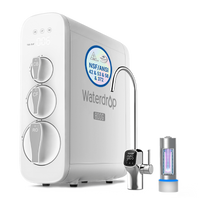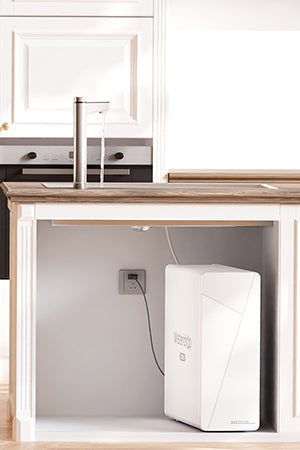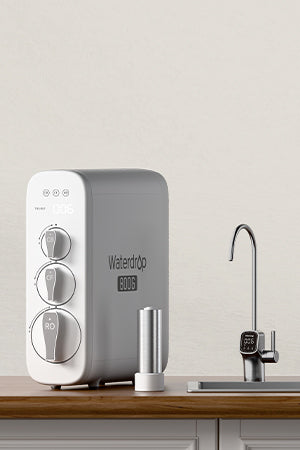Pour une santé optimale, notre corps a besoin d'eau pour fonctionner correctement, grâce à une consommation suffisante. Il est recommandé aux hommes de boire en moyenne 15,5 verres d'eau par jour, tandis que les femmes devraient en boire 11,5 verres. Cela permet aux organes de bien fonctionner, d'éliminer les toxines, etc. Cependant, pour la plupart des gens, l'eau du robinet ne suffit pas à remplacer les électrolytes perdus et à maintenir l'hydratation. Voyons ce qui rend l'eau du robinet impropre à la consommation et comment l'améliorer.
Qu'est-ce que l'odeur du soufre et quelle est son odeur ?
Le soufre est naturellement présent partout dans le monde sous forme de minéraux, communément appelés sulfate et sulfure. Deux types de sulfates présents dans l'eau du robinet contiennent du sulfate et du sulfure d'hydrogène. L'élimination de divers contaminants présents dans les produits pétroliers ou le gaz naturel produit la quasi-totalité du soufre élémentaire. Dans de rares cas, il peut résulter d'une réaction chimique entre l'oxygène et d'autres éléments (dont l'hydrogène).
L'odeur du soufre peut être extrêmement désagréable, surtout dans l'eau potable. Si vous utilisez votre chauffe-eau à la maison et que vous commencez à sentir une forte odeur, il se peut qu'elle provienne du sulfure d'hydrogène. L'odeur nauséabonde d'une réaction chimique produit un composé rappelant les œufs pourris, voire l'ail.
Quand le soufre est-il entré dans mon eau ?
Le soufre peut s'infiltrer dans l'eau de plusieurs façons. Les problèmes surviennent généralement lorsque :
-
Des bactéries se développent dans un chauffe-eau.
Les chauffe-eau offrent un environnement chaud propice à la prolifération des bactéries, notamment des bactéries sulfato-réductrices. Ce phénomène provoque une odeur de soufre lorsque l'hydrogène gazeux (par exemple) se décompose avec les molécules d'oxygène.
-
Conduites d’eau abritant des bactéries.
Les sulfates naturels rencontrent les bactéries qui vivent dans vos conduites d’eau, ce qui entraîne la production de gaz sulfuré d’hydrogène.
-
Quelque chose dans votre eau est en train de pourrir.
-
L'acide est tombé.
Saviez-vous que des sulfates sont présents dans l'atmosphère ? Ils sont également présents dans nos réserves d'eau. En effet, le trioxyde de soufre est présent dans l'atmosphère et se forme lors de la combustion de combustibles fossiles, combinée à la vapeur d'eau présente dans l'air. Il en résulte de l'acide sulfurique dilué, également appelé pluies acides.
L’eau contenant du soufre est-elle nocive ?
Vous ne devriez pas vous inquiéter si vous prenez une douche avec de l'eau contenant du soufre. En effet, le soufre est un élément naturel de la vie et il n'a pas été démontré qu'il ait des effets néfastes sur la santé. Cela signifie que vous ne mettrez pas en danger votre bien-être ni votre santé générale si vous prenez une douche avec. Le principal inconvénient de l'eau contenant du soufre est son odeur nauséabonde. Cela rendrait sa consommation désagréable, voire difficile.
Si vous avez bu de l'eau pendant une période prolongée, vous pourriez souffrir d'allergies cutanées, de troubles gastro-intestinaux, etc. Bien que cela ne soit pas directement dû à la présence de soufre dans l'eau, cela pourrait être dû à une consommation insuffisante d'eau. Boire une quantité insuffisante d'eau peut entraîner de nombreux problèmes de santé et doit être évité à tout prix. Vous pourriez rencontrer des symptômes similaires si vous buvez de l'eau contenant beaucoup de soufre. Ceci souligne l'importance d'équilibrer la quantité de minéraux présents dans l'eau que vous buvez. Pour en savoir
plus, lisez la suite pour apprendre à bien boire de l'eau.
Faut-il traiter l’eau contenant du soufre ?
Tester votre eau
Si votre eau a mauvais goût ou sent mauvais, cela pourrait être dû à la présence de sulfates et de sulfure d'hydrogène. Pour résoudre ce problème, la première étape consiste à faire tester votre robinet par un professionnel qualifié qui déterminera la cause de ces odeurs.
Filtre à eau par osmose inverse
Une fois que vous aurez identifié l'odeur de soufre dans votre eau du robinet, il deviendra de plus en plus évident qu'il est temps de la purifier. Cela permettra d'éliminer en toute sécurité diverses odeurs et impuretés. Un filtre à eau
par osmose inverse, par exemple, peut fournir le niveau de purification nécessaire.
Grâce à la taille des pores de la membrane du filtre à osmose inverse, d'au moins 0,0001 micron, les odeurs particulières sont efficacement éliminées, notamment le soufre, un problème naturel. Ce type de purification de l'eau n'engendrera aucun problème supplémentaire pour votre source d'eau, ce qui prouve l'innovation du système d'osmose inverse.
Le système d'osmose inverse sans réservoir de 800 GPD, équipé d'une lampe UV avancée et de filtres à 3 étages, est vivement recommandé. Capable d'éliminer jusqu'à 99,9 % des virus et bactéries, ce système de purification met en valeur l'efficacité des lampes UV. Non seulement il réduit les bactéries responsables des sulfates, mais il élimine également le soufre de votre eau du robinet. Grâce à une membrane à 7 couches, la teneur en chlore est réduite jusqu'à 12 fois plus qu'avec un système de purification d'eau classique. De plus, Waterdrop intègre un inhibiteur de tartre pour réduire l'accumulation et garantir des performances optimales.






































































